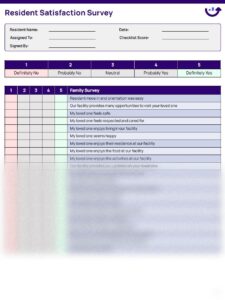Are you a property developer, a local authority, or part of a community looking to understand and influence how residents travel? Crafting a comprehensive residential travel plan is an increasingly vital step in creating sustainable, livable communities. These plans aren’t just about ticking a box; they’re about actively shaping travel patterns to reduce reliance on private cars, promote healthier alternatives, and ultimately, improve quality of life for everyone. A key foundational element for any successful travel plan is gathering accurate data, and that’s precisely where a well-designed survey comes into play.
Understanding existing travel habits, resident preferences, and potential barriers to adopting sustainable modes is paramount. Without this insight, any proposed interventions would be mere guesswork. A robust survey provides the evidence base needed to develop targeted, effective strategies that truly resonate with the community. It helps identify opportunities for cycle paths, improved public transport links, car-sharing schemes, or even just better pedestrian routes within and around a new development.
Why Your Development Needs a Residential Travel Plan Survey
Implementing a residential travel plan isn’t just a regulatory requirement in many areas; it’s a strategic move that offers significant benefits for developers, residents, and the wider environment. At its core, a travel plan aims to mitigate the transport impacts of new developments, encouraging a shift towards more sustainable modes of transport. To achieve this, you first need to know where your residents are starting from, what their current travel patterns look like, and what might encourage them to change. This is where a detailed survey becomes indispensable, providing a snapshot of current mobility behaviours and future aspirations.
Collecting this data allows you to tailor initiatives that genuinely meet the needs of your residents. For instance, if a survey reveals a high desire for cycling but a lack of secure bike storage, you can prioritize the installation of dedicated bike sheds. If public transport use is low due to perceived inconvenience, you might work with local providers to improve routing or frequency. Without this foundational data, efforts could be misdirected, leading to ineffective solutions and wasted resources. A comprehensive understanding of travel habits ensures that every element of the travel plan is grounded in real-world insight, leading to better outcomes for everyone involved.
Moreover, conducting such a survey demonstrates a commitment to sustainable development, which can enhance the reputation of a development and attract environmentally conscious buyers or tenants. It’s about being proactive rather than reactive, addressing potential transport issues before they become significant problems. This forward-thinking approach not only contributes to environmental goals but also fosters a stronger sense of community by improving accessibility and reducing traffic congestion in the surrounding areas.
Ultimately, a residential travel plan survey serves as the diagnostic tool for understanding the transport health of your development. It highlights areas of strength, identifies weaknesses, and points towards opportunities for positive change. It provides the empirical data needed to advocate for funding, justify infrastructure improvements, and measure the success of implemented travel initiatives over time.
Key Information to Gather in Your Survey
- Current modes of transport used for commuting, leisure, and errands (e.g., car, public transport, cycling, walking).
- Frequency and distance of journeys for various purposes.
- Reasons for choosing particular modes of transport (e.g., convenience, cost, speed, environmental concerns).
- Awareness and perception of existing sustainable transport options in the area.
- Barriers to using sustainable transport (e.g., lack of infrastructure, safety concerns, travel time).
- Interest in and likelihood of using future sustainable travel initiatives (e.g., car clubs, cycle-to-work schemes, improved bus services).
- Demographic information to segment responses (e.g., household size, car ownership, presence of children).
Crafting an Effective Residential Travel Plan Survey Template
Designing a survey that truly captures meaningful data requires careful consideration. It’s not just about asking questions, but asking the right questions in the right way to encourage participation and yield actionable insights. The structure and clarity of your residential travel plan survey template are paramount. Start by defining your objectives: what specific information do you need to collect to inform your travel plan? Are you looking to understand modal split, identify barriers to active travel, or gauge interest in new sustainable transport initiatives? Clear objectives will guide the selection and phrasing of your questions.
Keep the survey concise and easy to understand. Residents are more likely to complete a survey that doesn’t feel like a chore. Use simple, unambiguous language, avoid jargon, and ensure that questions are logically ordered. Employ a mix of question types, including multiple-choice, rating scales, and open-ended questions, to gather both quantitative data that can be easily analyzed and qualitative feedback that provides deeper context. Consider piloting the survey with a small group of residents first to identify any ambiguities or issues with flow.
The method of delivery is also crucial for maximizing response rates. While paper surveys can work for very targeted, in-person distribution, online platforms often offer greater reach and ease of data collection. Tools like Google Forms, SurveyMonkey, or dedicated resident engagement platforms can facilitate widespread distribution via email, social media groups, or QR codes on community noticeboards. Remember to include clear instructions on how to complete the survey and provide a realistic estimate of the time required.
Finally, always ensure that data privacy and ethical considerations are at the forefront of your survey design. Clearly state how the collected data will be used, who will have access to it, and how confidentiality will be maintained. Providing an option for anonymous responses can also increase participation, especially for sensitive topics. Once the data is collected, the real work of analysis begins. Look for patterns, correlations, and outliers that can inform specific interventions within your residential travel plan. This data-driven approach ensures that your plan is not only effective but also highly responsive to the actual needs and desires of your residents, fostering a healthier, more connected community.


